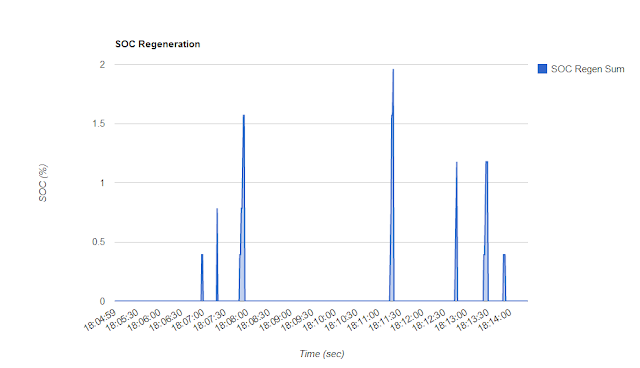Torque Log Analyzer is well suited for comparing different trips on the same road.
Here is an example.
My commute back from work is usually regular and I know the road really well, so I experimented with 2 different styles:
relaxed driving, with as little changes of pace as possible.
aggressive driving, with braking to the limit and overtaking every other car.
Two report parameters may measure driving style:
- Average Absolute Speed Variation
- Battery Stress
For the relaxed driving, Speed Variation is 1.97, while on aggressive, it scores 3.11.
So a lower value means a more relaxed driving.
Battery Stress measures current flow in and out of the HV battery: just like an elastic rope, the lesser the stretch, the longer the life expectancy.
Relaxed driving scores 21.58, while aggressive amounts to 35.93.
So an aggressive driving results in more battery consumption.
























